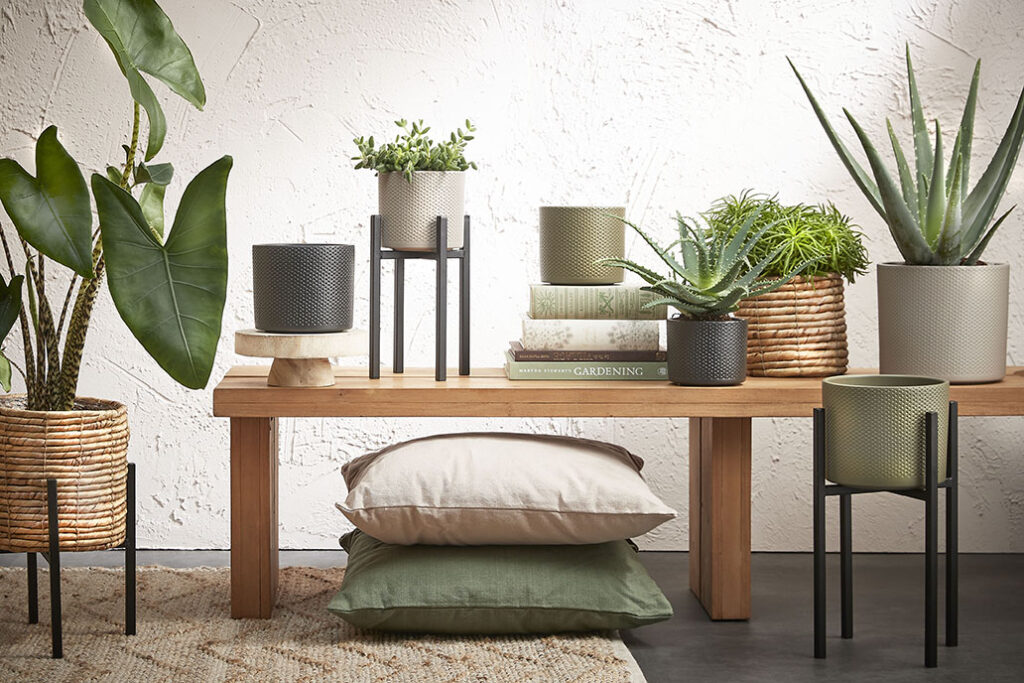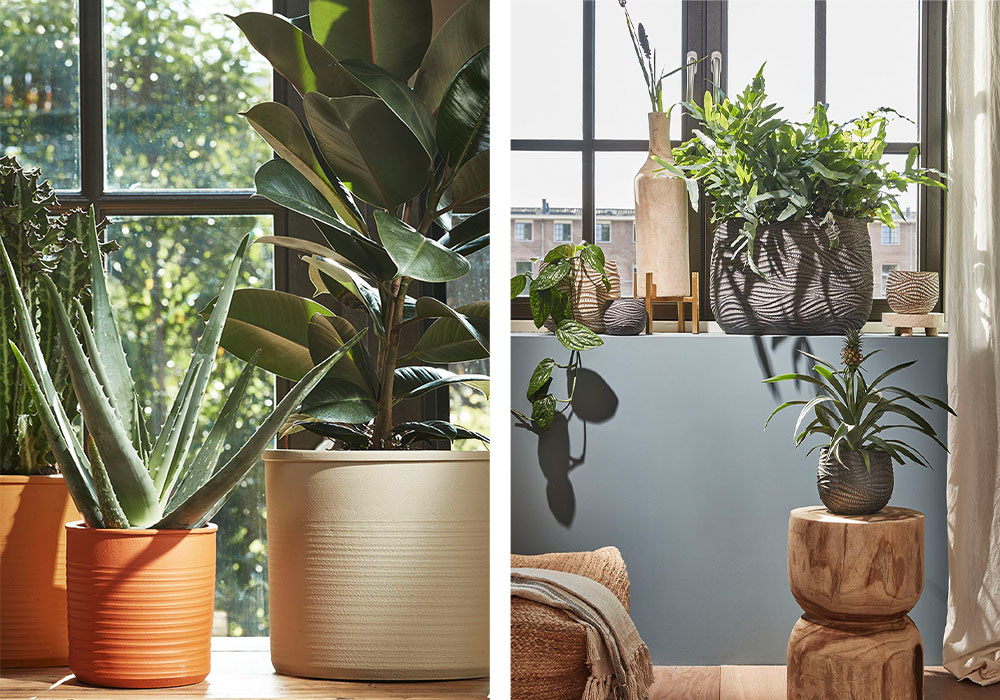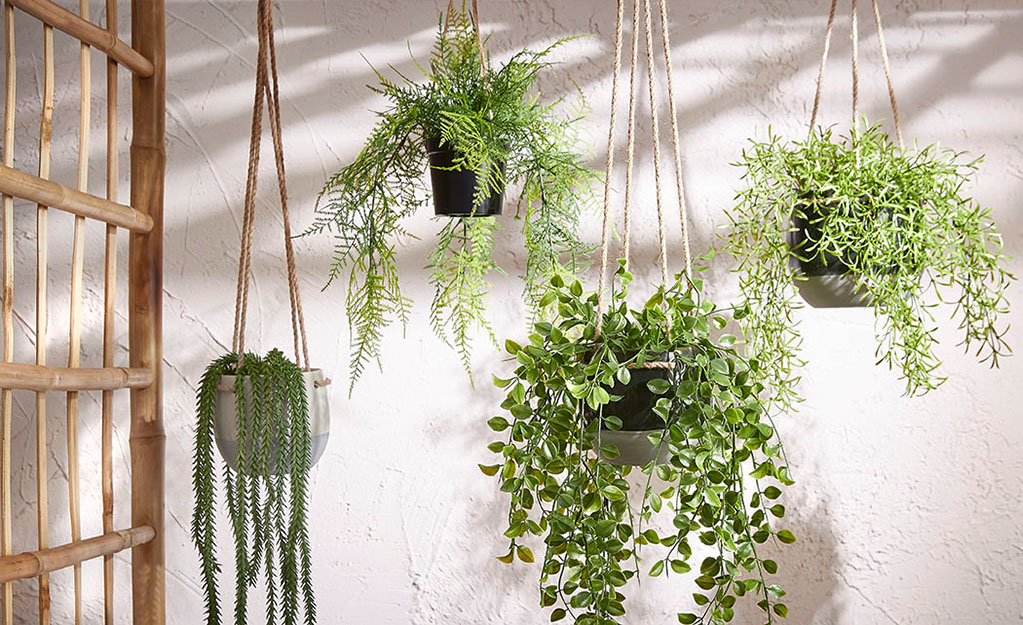Who doesn’t love having plants at home? They look great in your interior and give it energy. Not everyone has the same success when it comes to caring for houseplants, however. That’s why we’ve put together this handy step-by-step plan. Take a look at our 5 tips and start enjoying a greener interior right away!
1. Think about the pot you use
Of course you want to get your plant into a lovely pot as soon as possible, but first take some time to decide what the best choice for it is. There are multiple options. You can leave your plant in its plastic pot before planting it in an appropriately sized flower pot. This way you minimise the risk of the roots rotting due to overwatering. If you prefer giving your plant some room to grow, it’s best to ditch the plastic pot and plant your plant in a larger flowerpot. Choose a pot with a hole (and a saucer!) at the base so the water can drain away easily, or choose a a sealed pot and fill a quarter of it with Hydroton clay pebbles. These clay pebbles will absorb any excess water.
2. Place your plant in a suitable location
When it comes to finding the right place in your home, every houseplant has its own list of demands. While some plants like to get as much sunlight as possible, others enjoy being in a darker spot. The plant usually comes with a label listing this information. Otherwise Google is sure to have the answer! It is also important to not put the plant right up against the glass. This can cause the plant to burn (or freeze). Putting them too near the heating also isn’t so good, as there is a good chance the plant will end up drying out. The same goes for underfloor heating, so it may be a good idea to place your plant pot in a plant stand and not directly on the floor.

3. Give it the right amount of water
Alongside the amount of light, the amount of water a plant needs also differs from plant to plant. Some plants like moister soil, while others don’t mind being dry for a couple of days. Double check the traits and needs of the plant and keep these in mind. Don’t worry, you’ve already taken the precautions listed in step one, so it’s not such a big problem if you give your plant too much water every now and then. Worried about forgetting? Make watering your plants a weekly ritual, or put a reminder on your phone.
Tip: Create your own plant labels with important information such as how often you should water the plant and the type of location it prefers. You can put this in the pot with the plant itself. It looks great, plus you know exactly what your little greens friends need!
4. Keep an eye on the leaves
You can prevent many problems with your plants by taking a close look at them from time to time. If the leaves are turning yellow or the plant is starting to droop, something is not quite right with it. Remove any yellow leaves and dry flowers and see what can be done to revive and strengthen the plant. You should also look out for any aphids, spider mites or other potential pests on the plant. If you spot anything strange, take action right away! Did you know you can also dust larger leaves to help them absorb light better?

5. Add extra nutrition if necessary
The right potting soil provides the necessary nutrients for at least 6 weeks. After that, it may be a good idea to give your plant a bit of extra nutrition. You can identify a lack of nutrition in a number of ways, such as leaves being discoloured or falling off, or the plant being limp or just not wanting to grow anymore. Plant food can give your plant an extra vitamin boost, helping it to recover completely. The best time to do this is during the growing season, i.e. during spring and summer.
Still no success with taking care of your houseplants even after reading these 5 tips? A good artificial plant can look just as beautiful! That way you have a plant you can enjoy care-free all year round!




